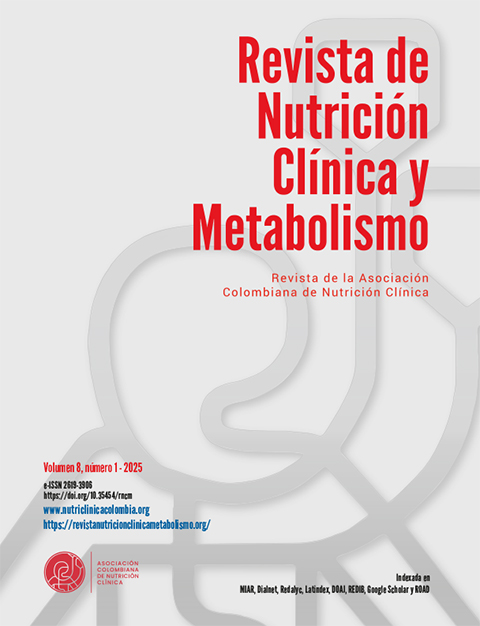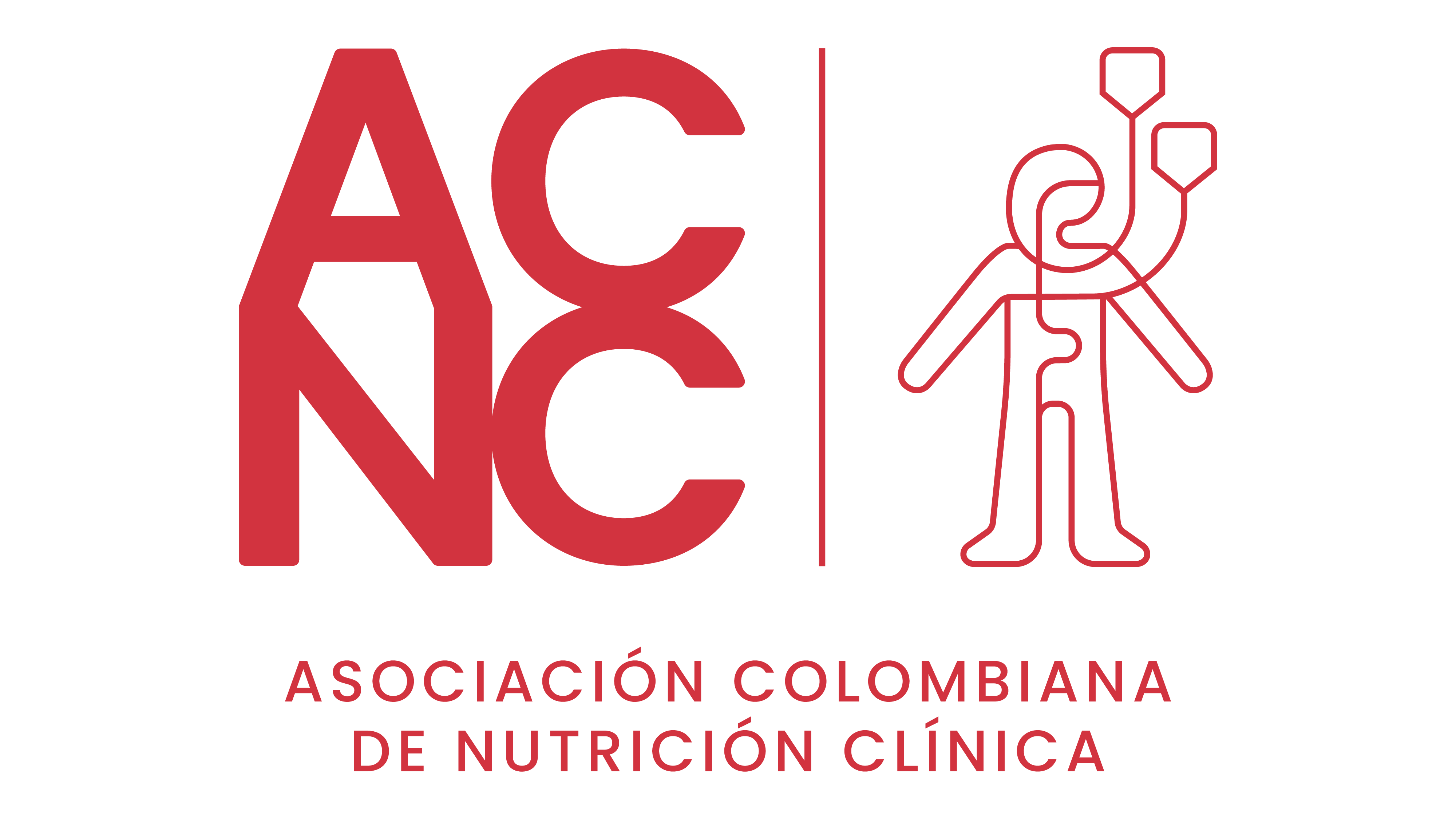Benefits of blenderized tube feeding in gastrointestinal problems for children with cerebral palsy: a scoping review
DOI:
https://doi.org/10.35454/rncm.v8n1.687Keywords:
enteral nutrition, cerebral palsy, gastroesophageal reflux disease, constipation, quality of life, scoping reviewAbstract
Introduction: Cerebral palsy (CP) encompasses a group of permanent disorders affecting movement and posture, significantly limiting the ability to perform daily activities. Gastrointestinal problems, such as gastroesophageal reflux disease (GERD) and constipation, are prevalent in children with CP, impacting their quality of life and nutritional status. Blenderized tube feeding (BTF) has emerged as a promising alternative to commercial formulas for addressing these challenges. Objective: To evaluate existing evidence on the benefits of BTF in managing gastrointestinal problems in children with CP, identifying knowledge gaps and opportunities for future research. Methods: A scoping review was conducted following the PRISMA-ScR methodology. Studies published between 2014 and 2024 in English and Spanish were included, focusing on children with CP who received BTF via gastrostomy tube. Randomized controlled trials, cohort studies, case reports, systematic reviews, and grey literature were analyzed. Results were extracted and categorized based on their impact on gastrointestinal problems such as GERD, constipation, vomiting, and abdominal pain. Results: Out of 182 identified articles, 10 met the inclusion criteria. BTF demonstrated significant benefits, including a lower incidence of GERD and constipation (p = 0.04), a 73% reduction in gastrointestinal symptoms, and better tolerance to feeding volumes. Additionally, caregivers reported improvements in their perception of the feeding process and enhanced psychosocial well-being for both patients and their families. Conclusions: BTF is an effective and accessible alternative for managing gastrointestinal problems in children with CP, offering notable psychosocial benefits. However, the lack of standardized guidelines and robust long-term evidence underscores the need for further research to ensure its safe and consistent implementation.
Downloads
References
Rosenbaum P, Paneth N, Leviton A, Goldstein M, Bax M, Damiano D, et al. A report: the definition and classification of cerebral palsy April 2006. Dev Med Child Neurol. 2007; 109: 8-14. doi:10.1111/j.1469-8749.2007.tb12610.x
McIntyre S, Goldsmith S, Webb A, Ehlinger V, Hollung SJ, McConnell K, et al. Global prevalence of cerebral palsy: A systematic analysis. Dev Med Child Neurol. 2022; 64(12): 1494-506. doi: 10.1111/dmcn.15346
Del Giudice E, Staiano A, Capano G, Romano A, Florimonte L, Miele E, et al. Gastrointestinal manifestations in children with cerebral palsy. Brain Dev. 1999; 21(5): 307-11. doi: 10.1016/s0387-7604(99)00025-x
Gangil A, Patwari AK, Bajaj P, Kashyap R, Anand VK. Gastroesophageal reflux disease in children with cerebral palsy. Indian Pediatr. 2001; 38(7): 766-70.
Veugelers R, Benninga MA, Calis EAC, Willemsen SP, Evenhuis H, Tibboel D, et al. Prevalence and clinical presentation of constipation in children with severe generalized cerebral palsy. Dev Med Child Neurol. 2010; 52(9): e216-21. Disponible en: doi: 10.1111/j.1469-8749.2010.03701.x
Romano C, van Wynckel M, Hulst J, Broekaert I, Bronsky J, Dall’Oglio L, et al. European Society for paediatric Gastroenterology, Hepatology and Nutrition guidelines for the Evaluation and treatment of gastrointestinal and nutritional complications in children with neurological impairment. J Pediatr Gastroenterol Nutr. 2017; 65(2): 242-64. doi: 10.1097/MPG.0000000000001646.
Köglmeier J, Assecaira I, Banci E, De Koning B, Haiden N, Indrio F, et al. The use of blended diets in children with enteral feeding tubes: A joint position paper of the ESPGHAN Committees of Allied Health Professionals and Nutrition. J Pediatr Gastroenterol Nutr. 2023; 76(1): 109-17. doi: 10.1097/mpg.0000000000003601
Tricco AC, Lillie E, Zarin W, O’Brien KK, Colquhoun H, Levac D, et al. PRISMA extension for scoping reviews (PRISMA-ScR): Checklist and explanation. Ann Intern Med. 2018; 169(7): 467-73. doi: 10.7326/m18-0850
Open Science Framework. Benefits of blenderized tube feeding in gastrointestinal problems in children with cerebral palsy: a scoping review. OFS [Internet]. 2024. [citado 11 de septiembre de 2024]. Disponible en: https://osf.io/2dg36/
Diamanti A, Capriati T, Mosca A, Trovato CM, Laureti F, Mazzoli B, et al. Neurological impairment and malnutrition in children: The role of home enteral nutrition in real life. Front Nutr. 2023; 10. doi: 10.3389/fnut.2023.1087603
Kernizan D, Mintz D, Colin M, Lee M, Yoakam L, Chen YP, et al. Outcomes and safety of blenderized tube feedings in pediatric patients: A single center’s experience. J Pediatr Gastroenterol Nutr. 2020; 71(4): e124-128. doi: 10.1097/mpg.0000000000002853
O’Connor G, Watson M, Van Der Linde M, Bonner RS, Hopkins J, Saduera S. Monitor gastrointestinal tolerance in children who have switched to an “enteral formula with food‐derived ingredients”: A national, multicenter retrospective chart review (RICIMIX study). Nutr Clin Pract. 2022; 37(4): 929-34. doi: 10.1002/ncp.10812
Dipasquale V, Diamanti A, Trovato CM, Elia D, Romano C. Real food in enteral nutrition for chronically ill children: overview and practical clinical cases. Curr Med Res Opin. 2022; 38(5): 831-5. doi: 10.1080/03007995.2022.2052514
Fraser LK, Bedendo A, O’neill M, Taylor J, Hackett J, Horridge K, et al. ‘YourTube’ the role of different diets in gastrostomy‐fed children: Baseline findings from a prospective cohort study. Dev Med Child Neurol. 2024; 66(6): 755-64. doi: 10.1111/dmcn.15799
Maddison J, Taylor J, O’Neill M, Cade J, Hewitt C, Horridge K, et al. Outcomes for gastrostomy‐fed children and their parents: qualitative findings from the ‘Your Tube’ study. Dev Med Child Neurol. 2021; 63(9): 1099-106. doi: 0.1111/dmcn.14868
Gallagher K, Flint A, Mouzaki M, Carpenter A, Haliburton B, Bannister L, et al. Blenderized enteral nutrition diet study: Feasibility, clinical, and microbiome outcomes of providing blenderized feeds through a gastric tube in a medically complex pediatric population. JPEN J Parenter Enteral Nutr. 2018; 42(6): 1046-60. doi: 10.1002/jpen.1049
Coad J, Toft A, Lapwood S, Manning J, Hunter M, Jenkins H, et al. Blended foods for tube-fed children: a safe and realistic option? A rapid review of the evidence. Arch Dis Child. 2017; 102(3): 274-8. doi:10.1136/archdischild-2016-311030
Hron B, Ng T, Voss S, Rosen R. Effect of blenderized tube feeds on gastric emptying: A retrospective cohort study. JPEN J Parenter Enteral Nutr. 2023; 47(5): 654-61. doi:10.1002/jpen.2513
Chandrasekar N, Dehlsen K, Leach ST, Krishnan U. Blenderised tube feeds vs. Commercial formula: Which is better for gastrostomy-fed children? Nutrients. 2022; 14(15): 3139. doi: 10.3390/nu14153139
Peers E, Boocock RC, Burn N. A systematic review examining the impact of blended diets on the gastrointestinal symptoms of people who are enterally fed. J Hum Nutr Diet. 2023; 36(3): 673-86. doi: 10.1111/jhn.13090
Brekke G, Raun AMT, Sørensen SB, Kok K, Sørensen JL, Born AP, et al. Nutrition and preparation of blenderized tube feeding in children and adolescents with neurological impairment: A scoping review. Nutr Clin Pract. 2022; 37(4): 783-96. doi: 10.1002/ncp.10853
Oftedal S, McCormack S, Stevenson R, Benfer K, Boyd RN, Bell K. The evolution of nutrition management in children with severe neurological impairment with a focus on cerebral palsy. J Hum Nutr Diet. 2025; 38(1): e13277. doi: 10.1111/jhn.13277
Dipasquale V, Aumar M, Ley D, Antoine M, Romano C, Gottrand F. Tube feeding in neurologically disabled children: Hot topics and new directions. Nutrients. 2022; 14(18): 3831. doi: 10.3390/nu14183831
Epp L, Blackmer A, Church A, Ford I, Grenda B, Larimer C, et al. Blenderized tube feedings: Practice recommendations from the American Society for Parenteral and Enteral Nutrition. Nutr Clin Pract. 2023; 38(6):1190-219. doi: 10.1002/ncp.11055
Downloads
Published
How to Cite
Issue
Section
License
Copyright (c) 2025 José Rodrigo Morgado Ramírez, Sara Rebeca Fajardo Compagny, Carolina Gonzalez Zavala, Humberto Jesus Borquez Arce

This work is licensed under a Creative Commons Attribution-NonCommercial-ShareAlike 4.0 International License.




















